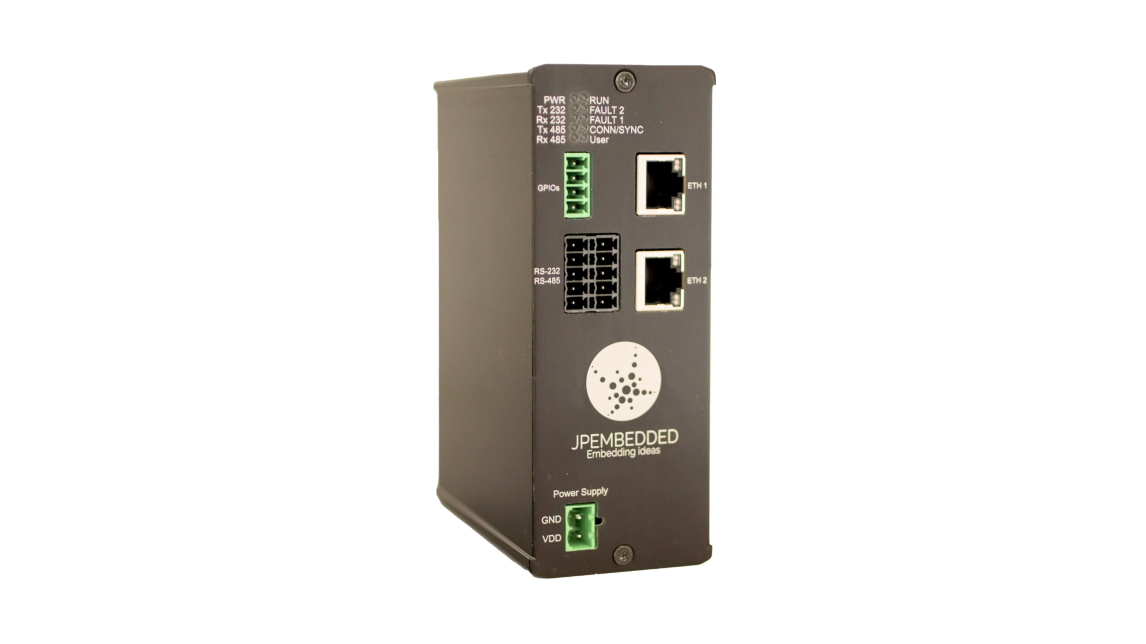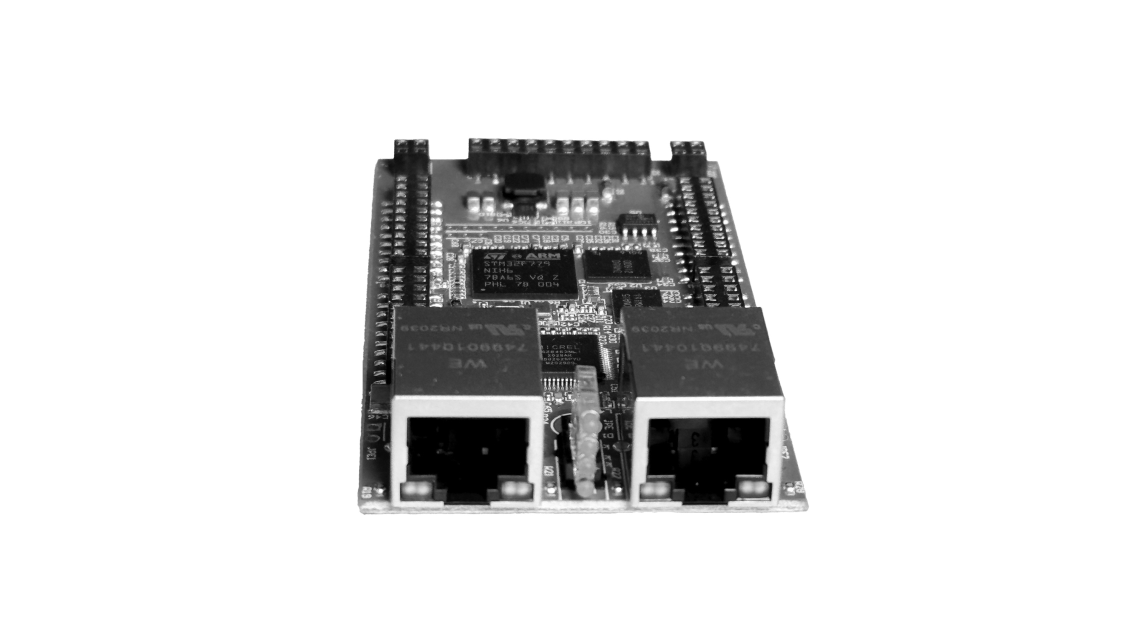Why did a company like JPEmbedded choose to use an STM32F7 in its APIS Box, a network protocol converter for Modbus and MQTT, among others? Avid readers of the ST Blog know that we often highlight the unique technical specifications of our devices to show why they stand out from the competition. However, the APIS Box is an exciting use case because it relies so heavily on its maker’s software that it is a suitable candidate for platform agnosticism. And yet, JPEmbedded is a member of the ST Partner Program, chose the ST microcontroller, and will be showcasing it at Enlit Europe, an international fair focusing on smart energy and power engineering. Let’s see what happened behind the scenes.
Reason 1: The APIS Box needed an STM32F7
What is the APIS Box?

As the demo video below shows, the APIS Box serves a critical function: ensuring that equipment on smart grids, smart buildings, or other systems on the network can talk to each other. That’s why the JPEmbedded offers Ethernet, RS-232, and RS-485 ports. Their system supports IEC 61850, DNP3, Modbus RTU, Modbus TCP, IEC 60870-5-101, IEC 60870-5-103, IEC 60870-5-104, MQTT, and proprietary protocols. Put simply, the APIS Box aims to help bring cloud connectivity (it supports Google Cloud APIs) and interoperability regardless of the age of the equipment or its vendor. The box uses Drosera, JPEmbedded’s software, which opens the APIS Box’s features to even non-developers thanks to its GUI.
What does the APIS box need?
Sitting down with JPEmbedded, we discovered that one of the most critical technological constraints of such a system is its RAM size. Indeed, the APIS Box must have enough headroom to support new protocols and updates to its Drosera software. However, one of the most common constraints on microcontrollers is the size of their memory, and while moving to a microprocessor can be a great choice, it was outside the realm of what JPEmbedded was trying to accomplish. That’s why the company settled on an STM32F7 that contains 512 KB of RAM and 2 MB of flash memory. Moreover, the ST microcontroller enabled them to easily add 16 MB of SDRAM and 16 MB of flash on the PCB.
Finding an MCU that can work in an industrial setting, offers extensive interface support, has significant memory capabilities, and still manages to keep the bill of materials reasonable is challenging, which is what drew JPEmbedded to the ST portfolio. Either competing devices are significantly larger and more expensive, or their specifications are just not on par with the STM32F7. Products like APIS Box are why ST has the most extensive portfolio of Cortex-M7 MCUs in the industry, with more than 200 SKUs if we combine the STM32F7 and STM32H7 series. Such an extensive offering means that companies like JPEmbedded can find a general-purpose MCU genuinely tailored to their needs.
Reason 2: JPEmbedded relied on the ST ecosystem
Why would an engineer use an APIS Box?

A product like the APIS Box or its little brother, the APIS Mod, a module similar to the former but without its housing, can only be successful if it vastly simplifies processes. Indeed, the idea of a protocol converter isn’t new. The challenge is that coming up with this intermediate layer is arduous and fraught with technical pitfalls. Moreover, since many use cases are mission-critical, a bug or failure could have horrendously damaging effects. JPEmbedded thus tackles this complexity and guarantees safe operations through processes like Parallel Redundancy Protocol (PRP) support, so engineers wishing to connect their infrastructure to the cloud can do it in a few clicks.
Why JPEmbedded used the ST ecosystem?
To fulfill this mission, JPEmbedded must enjoy a mature software ecosystem on which to build its firmware. Creating its protocol converter is challenging enough without having to fight with an IDE or frustratingly suffer bugs on the MCU. That’s why the company chose an STM32F7. As JPEmbedded explained,
“Before settling on the STM32F7, we investigated its feature set, capabilities, and software ecosystem. STM32Cube ensured we could easily create our application. We used ST development boards and STLINK to flash the MCU and debug our code rapidly. In a nutshell, the ST tools helped us focus on bringing solutions to the smart energy market rather than battle with the hardware.”
Reason 3: The industry demands longevity commitments
How can smart energy equipment last longer?
Finally, smart energy equipment’s abnormally long lifespan is another critical and often overlooked aspect. APIS Box thus garnered such positive feedback because a lot of legacy equipment never had cloud communication or multi-protocol support in mind. However, as the industry strives for greater efficiency, using numerous standards and utilizing the cloud for analysis and control is becoming necessary. Consequently, the APIS Box must also be able to last a long time in the field. That means remaining operational and functional. It’s not only about ensuring the system runs but that it can also receive updates and adapt to new protocols or trends.
How did ST’s longevity commitments appeal to JPEmbedded
Therefore, the fact that ST provides a minimum longevity commitment of 10 years was an essential consideration for JPEmbedded. Indeed, the company can adopt an STM32F7 and know it will still be able to source them for a decade. Indeed, given that ST is still releasing new STM32F7s with a similar configuration, JPEmbedded has the assurance of having a supply of MCU long after the next iteration of the APIS Box comes to market. We are also committing to supporting the device, thus ensuring its integrity and place in the ecosystem. Hence, the company can promise that APIS Box will provide a secure and stable experience and even meet the standards of sensitive industries like smart grids.
